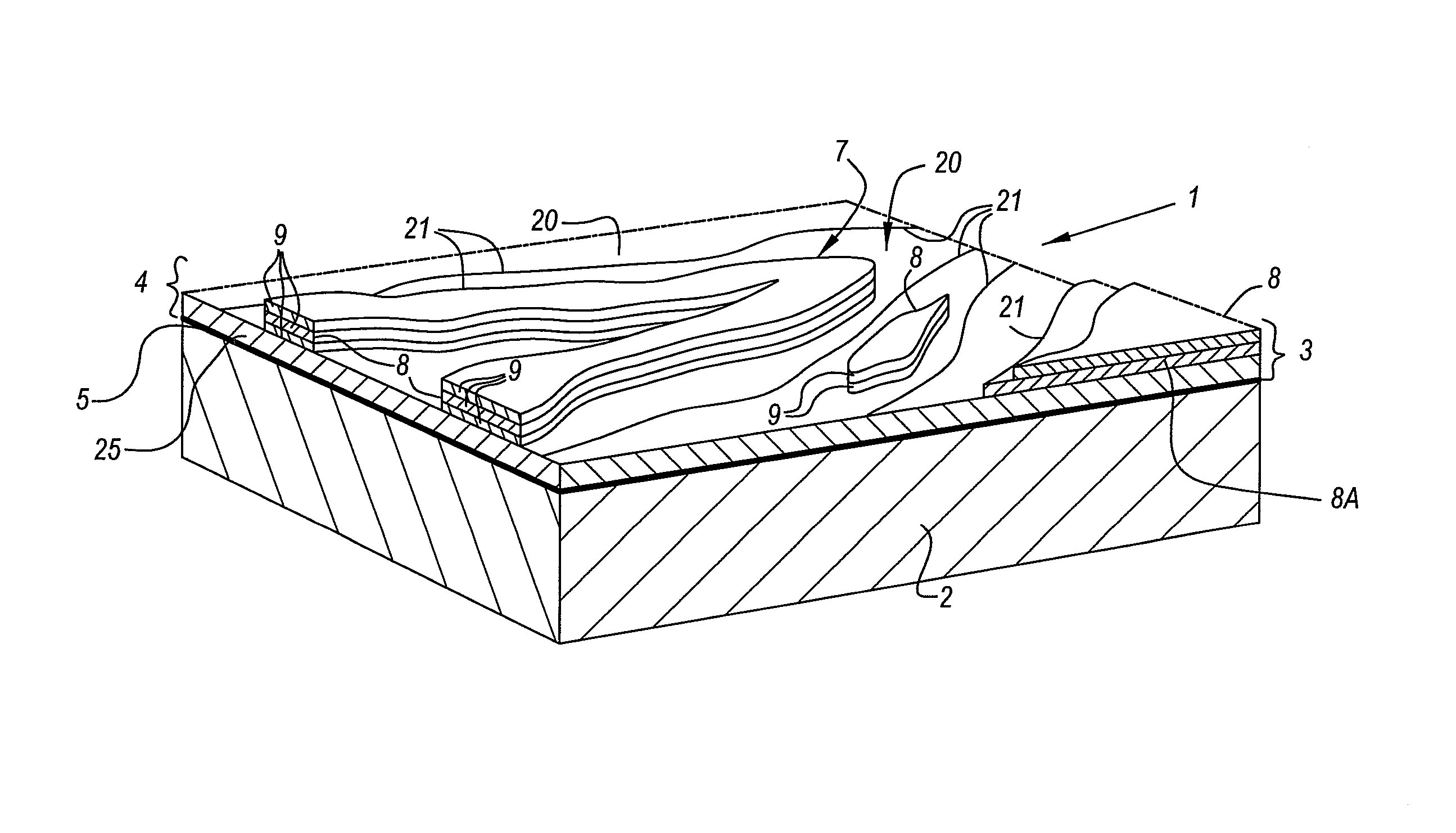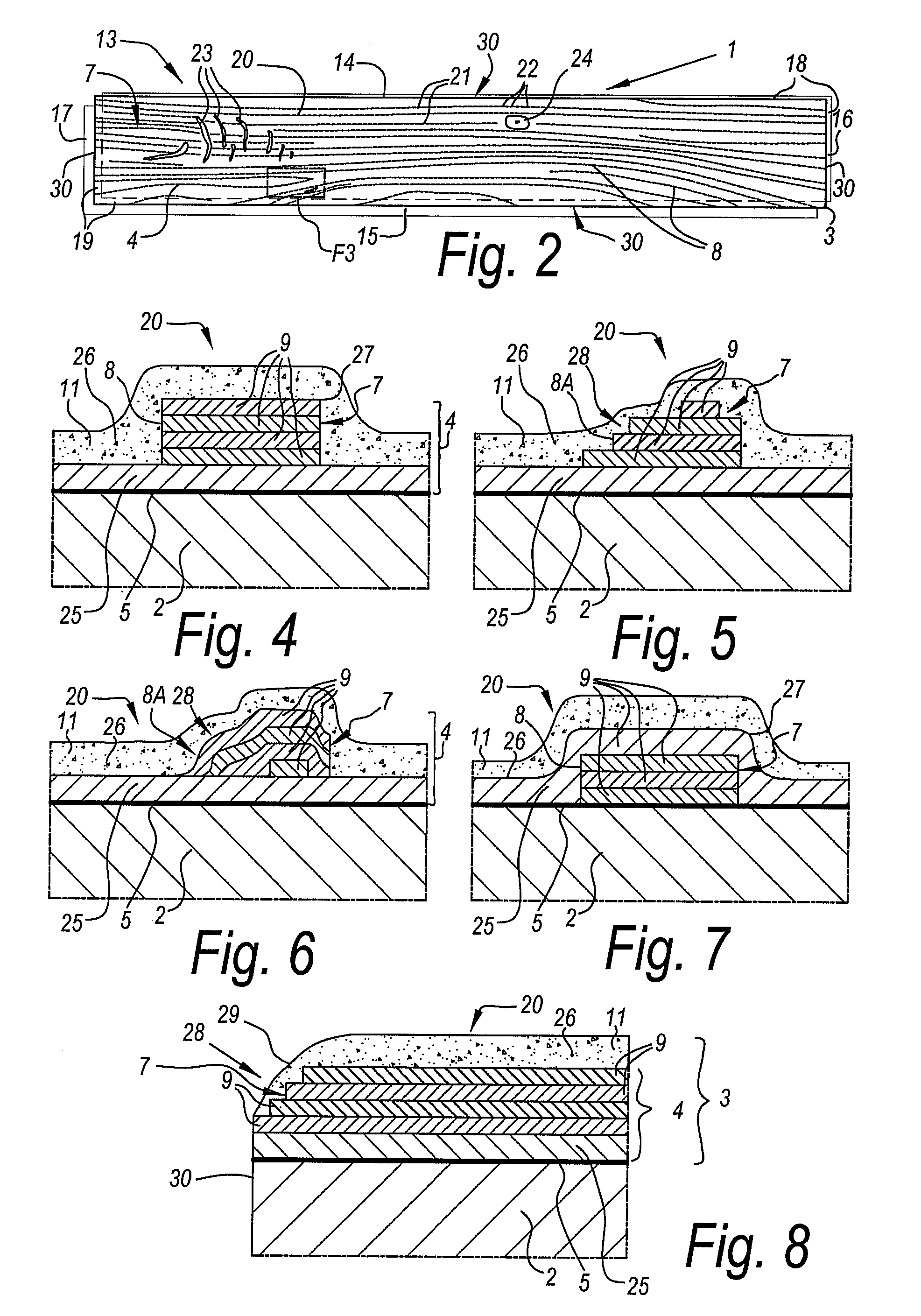Method for manufacturing coated panels
a coating and panel technology, applied in the direction of natural patterns, thin material processing, textiles and papermaking, etc., can solve the problems of unnatural appearance of the respective structure, difficult to realize the structure with acute angles by these techniques, and many to be desired in respect of flexibility and/or in respect of feasible structures, etc., to reduce the uv sensitivity of the pattern, reduce wear or scratches, and reduce the effect of wear and tear
- Summary
- Abstract
- Description
- Claims
- Application Information
AI Technical Summary
Benefits of technology
Problems solved by technology
Method used
Image
Examples
Embodiment Construction
[0033]FIG. 1 shows an example method for manufacturing a coated panel 1. Herein, one starts from a board-shaped substrate 2, on which a decorative top layer 3 is provided. For forming the top layer 3, the method involves at least a step S1 in which the substrate 2 is printed. The print 4 from step S1 represented here is performed indirectly on the substrate 2. In a preceding step S0, this substrate 2 then has been provided with one or more primer layers 5, such as uniform basic layers. Providing this basic layer or primer layer 5 in step S0 comprises, in this example, at least providing a substance 6, such as a lacquer, in liquid form. According to another possibility, the basic layer may also comprise solid layers, such as paper layers, or one may work without basic layer, such that in this latter case the print 4 is performed directly on the substrate 2.
[0034]The particularity of the method of the example consists in that during said step S1, in which the substrate 2 is printed, a...
PUM
 Login to View More
Login to View More Abstract
Description
Claims
Application Information
 Login to View More
Login to View More - R&D
- Intellectual Property
- Life Sciences
- Materials
- Tech Scout
- Unparalleled Data Quality
- Higher Quality Content
- 60% Fewer Hallucinations
Browse by: Latest US Patents, China's latest patents, Technical Efficacy Thesaurus, Application Domain, Technology Topic, Popular Technical Reports.
© 2025 PatSnap. All rights reserved.Legal|Privacy policy|Modern Slavery Act Transparency Statement|Sitemap|About US| Contact US: help@patsnap.com



